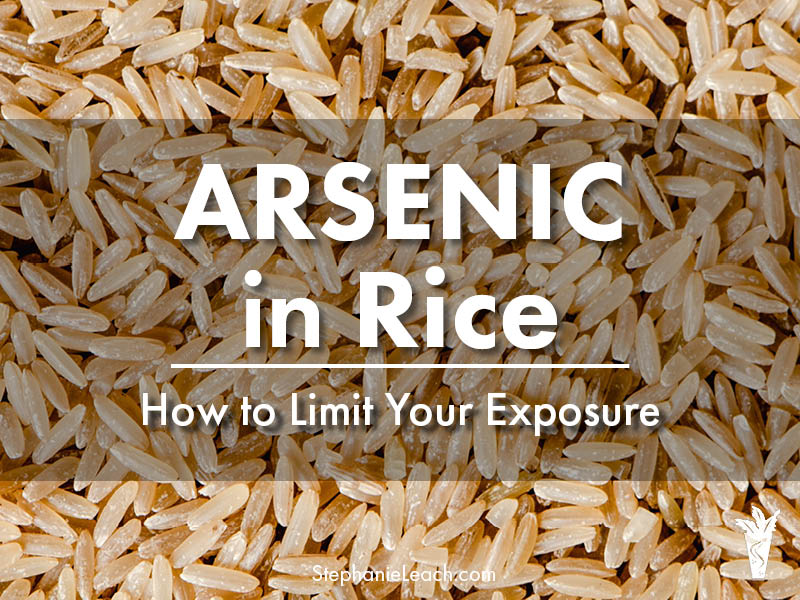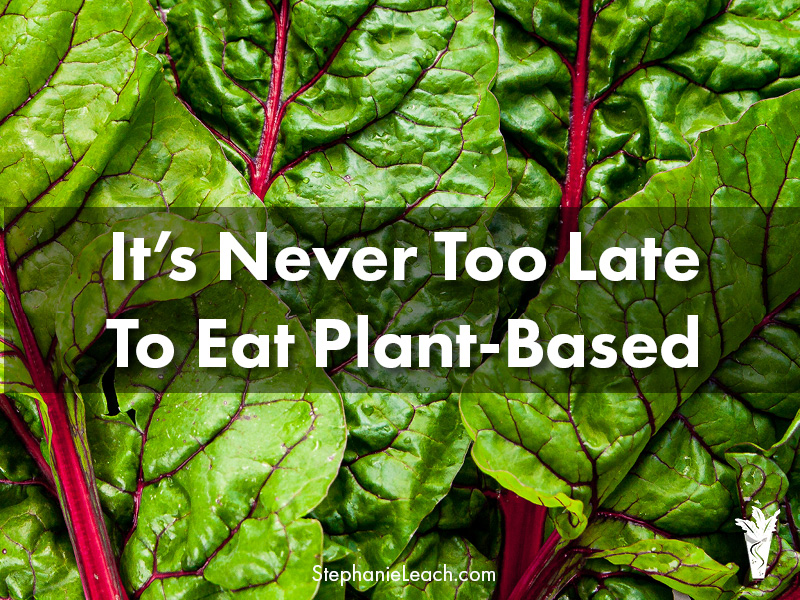Many people choose brown rice over white rice for the added health benefits. But rice has a problem. It often contains high levels of inorganic arsenic. And brown rice contains more than white rice because more arsenic is trapped in the outer bran layer.
Is any rice safe to eat? Here is what authorities have to say about reducing your exposure to arsenic in rice and rice products. I’ll also share what I am currently doing to limit my exposure.
But first, how rice ended up with a toxic arsenic problem . . .
Why Does Rice Have Arsenic?
I first wrote about the arsenic in rice back in 2013 after Consumer Reports came out with their Arsenic in Your Food report, but here is the short version of the story.
Chicken manure is a common fertilizer. For many years chickens were fed an arsenic-laced drug that helped control intestinal parasites in chickens raised in confined animal feeding operations (CAFOs.) This drug reduced infections, made the chickens grow faster because they ate more, and made the meat pinker in color.
Fields were also sprayed with pesticides that contained arsenic until it was banned in the 1980s. The south-central region of the United States with a long cotton-growing history was heavily treated with arsenical pesticides to combat the boll weevil beetle. These cotton plantations are now growing rice.
Because the arsenic was in organic form, it was considered safe for decades. Later it was discovered that when organic arsenic in chicken waste and pesticides is placed in an anaerobic environment such as soil, it can transform into highly toxic inorganic arsenic.
So now we have large growing areas of the United States contaminated with cancer-causing toxic inorganic arsenic. Because rice is grown in water-flooded fields, it takes up more arsenic than some other crops.
Current Arsenic Limits in Rice and Rice Products
A joint commission of the Food and Agriculture Organization of the United Nations and the World Health Organization called CODEX adopted a new standard for acceptable arsenic levels in rice in 2014.
It recommended that governments allow no more than 200 parts of arsenic per billion in white or “polished” rice and no more than 400 parts per billion in brown rice. Other experts recommended even lower limits.
These limits were not meant to imply these levels are safe. They were designed to encourage companies to reduce the amount of arsenic in their products.
Not surprisingly, the FDA has not set a legally enforceable level of arsenic for rice or rice-based foods. (There is a limit on arsenic in tap water at 10 ppb.)
Brown rice tested by Consumer Reports ranged from 3.7 to as high as 8.4 grams of inorganic arsenic per ½ cup serving. Rice from California, India and Thailand tested lower than most rice from Louisiana, Texas and Arkansas and Missouri. White rice and imported basmati and jasmine rice had the lowest amounts, around 1.3 to 3.5 micrograms per serving.
How Bad is Arsenic?
According to EPA estimates, the risk of cancer from 10 ppb of arsenic in tap water is 1 in 2,000, a 50-fold higher risk than that allowed for most other carcinogens.
“The problem, according to the National Research Council, is that with the current federal drinking water standard for arsenic of 10 μg/L, we are not talking about an excess cancer risk of 1 in a million people, but as high as 1 case in 300 people. Those 300 extra cases of cancer just turned into a million more cases? A million more families dealing with a cancer diagnosis? “This is 3000 times higher than a commonly accepted cancer risk for an environmental carcinogen of 1 case in 1 000 000 people.” If we were to use the normally accepted 1 in a million odds of cancer risk, the water standard would have to be 500 times lower, .02 instead of 10. Even the New Jersey standard is 250 times too high. “While this is a rather drastic difference… it underlines just how little precaution is instilled in the current guidelines.” – NutritonFacts.org
So according to research, the arsenic at 10ppb in our drinking water is responsible for at least 1 cancer case in 2,000 and could be as high as 1 in 300 people.
In addition to cancer, the health risks associated with chronic arsenic exposure include kidney damage, anemia, headaches, increased risk of diabetes, low blood pressure and skin lesions.
Infants and children are especially at risk. Exposure to arsenic is linked with preterm delivery, miscarriage, low birth weight and infant death. It can also negatively affect a child’s intelligence and long-term memory.
No amount of arsenic is safe. So, it’s up to each individual to make an informed decision about rice and rice product consumption.
What the EWG Recommends to Limit Arsenic Consumption
The Environmental Working Group recommends the following:
Limit your rice consumption. Consumer Reports suggested no more than 1-3 servings of rice or rice products per week. Rice products include brown rice syrup, rice flour, and other forms of rice. You’ll want to check the ingredient lists on your packaged products to see any references to rice.
Rinse your rice and cook it using the pasta method. Boiling your rice in a large volume of water can reduce the arsenic content by as much as 40%.
- For perfectly cooked brown rice using the pasta method, bring a large pot of water to a boil. Add your rice and boil for 30 minutes. Pour into a strainer and drain the rice for 10 seconds. Return the rice to the pot and cover with a tight-fitting lid. Steam for 10 minutes. Fluff with a fork.
Choose other grains. Barley, farro, Kamut®, couscous and bulgur wheat are good options. To avoid gluten, consider amaranth, buckwheat, millet, quinoa, gluten-free oats, cornmeal, grits and polenta.
Avoid or limit brown rice syrup often used as a “natural sweetener” in cereal bars and other “healthy” packaged products.
Do not use rice milk, which is often contaminated at parts higher than drinking water.
Use the EWG’s tap water database to check your local drinking water for arsenic levels.
What Dr. Joel Fuhrman Says About Rice
Dr. Fuhrman, creator of the nutrient-dense whole food-plant based Nutritarian diet and author of the books Eat to Live and Eat for Life, no longer recommends eating rice at all.
“Arsenic exposure leads to the generation of reactive oxygen species, inflammation, and genomic instability and is associated with an elevated risk of several cancers . . . It is important to avoid brown rice because of the risks of arsenic exposure and white rice because of its high glycemic load and lack of nutrient value.” – Dr. Joel Fuhrman
My Personal Rice Decision
At the time of this writing, I eat rice 3-4 times a month. I buy California grown Lundberg Family Farms brand rice because they have been testing their rice for 9 years and have some of the lowest arsenic content. I rinse it well under cold running water for several minutes. Then I boil it in a large quantity of water using the pasta method.
But after reviewing the risk, I am motivated to further reduce my rice consumption. Because we are creatures of habit, I sometimes forget that there are some very good alternatives to rice out there!
- Farro is one of my favorite rice substitutes. It is shaped like rice and has a nice flavor and toothsome bite. Kamut® is another good rice-shaped alternative. If I need a quick cooking alternative, I can use quinoa or bulgur, as I did in my Tex-Mex Bulgur Bowl recipe.
- I don’t eat commercial breakfast cereal, but I do have some granola bars in my pantry that contain brown rice syrup. I might eat 1 or 2 a month.
- I recently started buying a green lentil bean pasta, but a quick scan of the ingredient list revealed some rice flour in the product. It is likely a very small amount, but something to consider.
- I checked my local tap water in the EWG’s tap water database when we moved 2 years ago. Arsenic was not high, but there were 6 contaminants of concern, so I bought a countertop Aqua Tru reverse osmosis water filter to clean it up. (We love it!)
While it’s impossible to avoid all toxins in our increasingly contaminated world, we can do much to reduce our exposure by eliminating animal products and other foods that are high in toxins.
Personally, I don’t find it a hardship to further reduce my rice and rice product consumption. Branching out and using other grains more often will increase the variety of nutrients in my whole food, plant-based diet, and make meals more interesting.









Leave A Comment